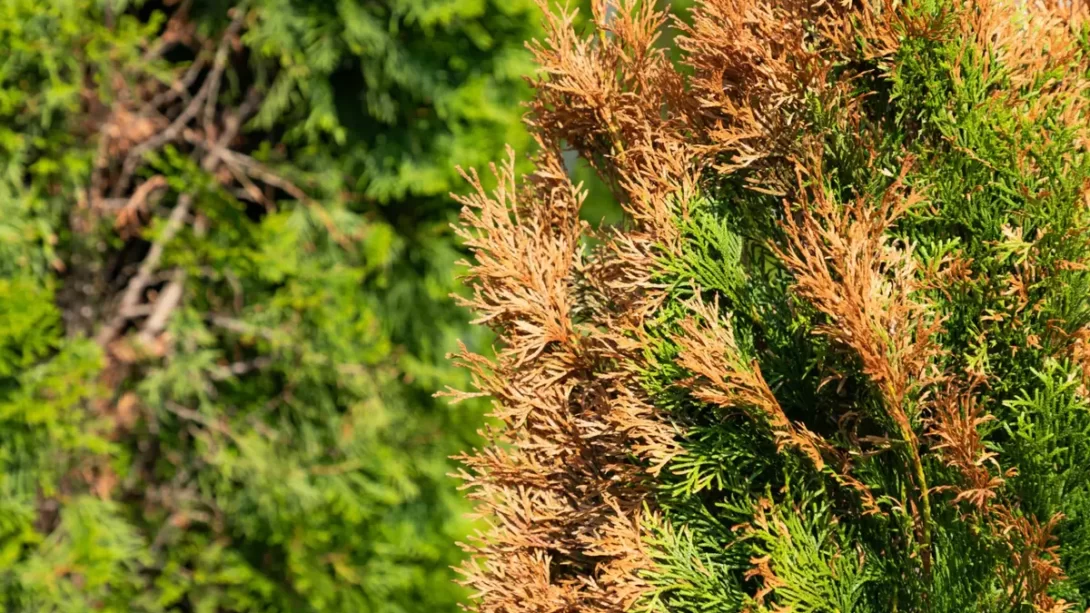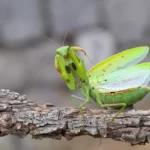The arborvitae (Thuja), a staple in many landscapes, is cherished for its evergreen foliage and versatile use in hedges and screens. However, gardeners often encounter a worrying issue: the browning of arborvitae leaves, particularly in the summer months. Understanding the reasons behind this can help in maintaining the health and beauty of these plants.
Arborvitae
Arborvitae species, known for their dense, evergreen foliage, are a popular choice for privacy screens and ornamental plantings. These conifers have a natural life cycle where old leaves turn brown and fall off as new growth emerges. However, excessive browning, especially in summer, can indicate underlying health issues.
Common Causes of Browning in Summer
Water Stress
Water stress is a primary factor in arborvitae browning. Both overwatering and underwatering can lead to this issue. Overwatering can cause root rot, depriving the plant of oxygen and leading to browning. Conversely, underwatering, especially in the heat of summer, can cause the foliage to dry out and turn brown. The key is to maintain a consistent watering schedule, ensuring that the soil remains moist but not waterlogged. A good practice is to water deeply once a week, adjusting based on rainfall and temperature.
Heat Stress
During the peak of summer, high temperatures and intense sunlight can cause stress to arborvitae, leading to browning. Young plants and those in full sun are particularly susceptible. To mitigate heat stress, it’s beneficial to provide some afternoon shade, especially for newly planted arborvitae. This can be done through strategic planting or by using shade cloths during the hottest parts of the day.
Soil Conditions
Soil quality plays a significant role in the health of arborvitae. These plants prefer well-draining soil with a slightly acidic to neutral pH. Poorly draining soil can lead to waterlogged conditions, promoting root rot. Compacted or heavy clay soils can also be problematic. Conducting a soil test can help identify any issues with soil composition or pH, allowing for appropriate amendments. Adding organic matter or using soil conditioners can improve drainage and soil structure.
Pests and Diseases
Pests and diseases are significant contributors to the browning of arborvitae in summer. Spider mites, for instance, thrive in hot, dry conditions and can cause foliage to turn brown and dry. Bagworms are another common pest, feeding on the leaves and leading to browning. On the disease front, root rot and leaf blight can also cause browning, especially in overly moist conditions. To manage these issues, regular inspection for pests and signs of disease is crucial. Treatment options include using appropriate insecticides for pests and fungicides for diseases. Additionally, maintaining good air circulation through pruning can help prevent disease outbreaks.
Nutrient Deficiencies
Nutrient deficiencies, particularly a lack of nitrogen or iron, can lead to the browning of arborvitae leaves. Yellowing leaves that eventually turn brown might indicate a nutrient imbalance. A soil test can determine if your plants are missing essential nutrients. Based on the results, you can apply a balanced fertilizer or specific supplements to address the deficiencies. It’s important to follow the recommended application rates, as over-fertilization can harm the plant and exacerbate browning issues.
Environmental and Cultural Factors
Poor Planting Practices
Improper planting techniques can stress arborvitae, leading to browning. Planting too deep, for example, can suffocate the roots, while planting in an unsuitable location (like a heavily shaded area) can prevent the plant from thriving. When planting arborvitae, ensure that the top of the root ball is level with or slightly above the ground level. Choose a location that receives adequate sunlight and has well-draining soil to promote healthy growth.
Wind and Physical Damage
Arborvitae can suffer from wind burn, particularly in exposed locations. Strong winds not only dry out the foliage, leading to browning but can also cause physical damage. To protect arborvitae from wind damage, consider planting them in a sheltered location or installing windbreaks. Additionally, avoid mechanical damage from lawn mowers and trimmers, as wounds on the bark can make the trees more susceptible to disease and pests.
Preventive Care and Maintenance
Regular maintenance is crucial for preventing browning and promoting the overall health of arborvitae. This includes timely pruning to remove dead or diseased branches, which helps in preventing the spread of pests and diseases. Pruning should be done carefully, as over-pruning can stress the plant. Mulching around the base of arborvitae can help retain soil moisture and regulate temperature, but be sure to keep the mulch a few inches away from the trunk to prevent rot.
Seasonal care is also important. In spring, apply a layer of compost or a balanced fertilizer to support growth. In fall, prepare the plants for winter by ensuring they are well-watered, as this helps prevent winter burn in cold climates.
Troubleshooting and Recovery
When facing browning issues in arborvitae, a systematic approach to troubleshooting can help identify and resolve the problem:
- Check Watering Practices: Ensure the plant is neither overwatered nor underwatered. Adjust your watering schedule according to the season and weather conditions.
- Assess Sunlight Exposure: If your arborvitae is in too much shade or exposed to intense sunlight, consider relocating it to a more suitable spot.
- Inspect for Pests and Diseases: Look for signs of infestations or fungal diseases. Treat promptly with appropriate measures such as insecticides or fungicides.
- Evaluate Soil Conditions: If a soil test indicates poor drainage or nutrient imbalances, take steps to amend the soil.
- Prune Damaged Foliage: Prune brown or damaged branches to encourage new growth. Be cautious not to over-prune, as this can stress the plant.
- Be Patient: Recovery can take time. Continue providing optimal care and monitor the plant’s progress.
Conclusion
Arborvitae browning, especially in summer, can be a sign of various issues, from water stress to pest infestations. By understanding these potential causes and implementing a regimen of proper care and maintenance, you can often prevent or remedy browning in these resilient plants. Regular observation, appropriate watering, pest control, and soil management are key to keeping your arborvitae healthy and vibrant. Remember, gardening is a dynamic process, and with patience and attention, your arborvitae can thrive for years to come.



